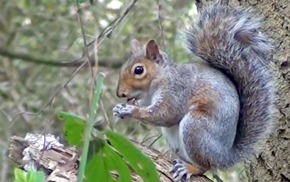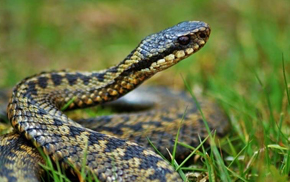Andy: 07907 966737
Liam: 07771 333244
forestpestcontrol@outlook.com
Wildlife removal from Forest Pest Control
Wildlife can at times cause damage to property and business, and where this becomes problematic such as holes in paddocks, Forest Pest Control can remedy the cause including;
- Foxes
- Grey Squirrels
- Moles
- Rabbits
Wildlife problems we can help you with
Our professional training allows us to legally remove most and treat problems with most kinds of wildlife. Please contact us if you have a specialist problem to see how we can help.

FOX PROBLEMS
Foxes (Vulpes Vulpes), both urban & rural are becoming more common and pose a problem and worry for those who have livestock and pets. Foxes will hunt or scavenge alone but live in family groups and can have up to 5 cubs each year. They mate between December and February, as the male fox will bark, the females will screech in reply. The gestation period is normally 52 days and can have a litter of up to 5 cubs during March/ April.
Urban foxes will make a den normally under sheds or decking and as they are territorial they will mark their territory using faeces and urine. Foxes may also carry Toxocara Canis (roundworm) which can be passed to humans and sarcoptic mange (mites) which is transferable to dogs. You may find that you have holes in your lawns and flowerbeds which are normally sure signs of fox activity. Their diet consists anything from worms, seeds, grubs, slugs, insects, small rodents, rabbits, chickens and whatever they can find in our rubbish bins. Where possible foxes will be caught in a live trap removing the risk of harming non-target species.
All foxes will be dispatched with a firearm, humanely and lawfully causing the least suffering to the animal. Their bodies will be disposed of by incineration which is an approved method of disposal. They will not be relocated as this is in contravention of the Animal Welfare Act 2006 and Countryside and Wildlife Act 1981. When we set the traps we ask that you monitor these traps regularly and notify us anytime 24/7 so that they can be dealt with without causing unnecessary suffering.
CONTACT US >>

MOLE INVASION
The European Moles ( Talpa europaea) are widely spread and are not particular in damaging gardens or paddocks. We cover the New Forest area and offer a professional and reliable service and will usually catch the first mole within 24 hours.
We normally operate over a 3 day period up to a week for gardens and potentially longer for paddocks and fields. The traps would be set on the first day and checked regularly until the task is complete. When the problem is resolved and you are satisfied with the result then payment would be then required.
It is possible that the problem will be not always be totally resolved on a permanent basis as moles will always travel where the food is and will very often use any existing runs/tunnels to expand their territory.
For farmers & equestrians we offer a service that slightly different approach for mole control. As farmland may contain a large amount of moles and require more time to set and examine, fees will be discussed in person and on site.
CONTACT US >>

GREY SQUIRREL REMOVAL
Grey squirrels (Sciurus carolinensis) cause extensive damage to trees and if they have gained access to loft spaces, will chew through wires and joists.
They are also believed to carry Squirrel Pox which is lethal for our native Red Squirrel. They will eat the eggs and young of our songbirds such as the blue tits & blackbirds. We have various methods of dealing with Squirrels which include using spring traps, live trapping in cages and in certain circumstances shooting using suitable air rifles that are within the legal parameters.
It is illegal to release any live caught Squirrels and all will be humanely dispatched. This is mainly used for areas with a high population of grey squirrels and will requiring prebaiting the site. All kills will be swift and humane.
CONTACT US >>

RABBIT REMOVAL
Rabbits (Oryctolagus cuniculus) can cause extensive damage to crops, grass and surrounding areas.
We often use Live cage traps or fenn traps which are checked every day in sensitive areas or paddocks and fields where livestock are kept. This prevents any unnecessary distress or alarm being caused to your animals. Consideration can also be given for shooting by way of shotgun if on fields which have been approved suitable for shooting by the Police or air rifle if targetting a specific area.
This is a beneficial for areas with rabbits that suffer from myxomatosis, a highly contagious disease for rabbits which is usually a fatal viral disease extremely distressing for the rabbit which causes sever inflammation of the mucous membranes and inflammation of the eyes.
CONTACT US >>

SNAKES
Forest Pest Control deals with catching & relocating snakes back into their natural habitat. However, there may be occasions where non-native species may have been released whereby the RSPCA should be contacted. If in doubt Forest Pest Control will attend to assess and identify.
In the UK we have only 3 snakes which are native to our country:
Adder or Common Viper (Vipera berus) - These are dark brown, black, reddish or black zig zag with spots on the sides along the body and approximately 50-60cm in length. Adders are the UK only venomous snake and will normally only bite if touched, cornered or threatened thes3 can be very painful but rarely fatal. Adders will breed every two years and give birth to litters in transparent sacs up to 20 snakes in the late summer and will hibernate over winter.
Grass Snake (Natrix natrix) - These we Olive green, brown or even grey in colour the neck area has yellow or white collar around the neck. The undersides is whitish in colour with irregular black blocks. They measure up to 75cm in length and move very quickly. These are non venomous. They lay eggs in batches up to 40 eggs in June /July and and hatch after 10 weeks and often found in compost heaps. They have a defence mechanism by producing a garlic smelling fluid from their anal glands. These are commonly found by ponds, steams rivers and marshes areas and are protected under the Wildlife & Countryside Act 1981.
Slow Worms (Anguis fragilis) - Although Slow Worms are not regarded as snakes they are in fact legless lizards and very often confused as snakes at first sight. They are brown, copper, golden or grey in colour and some have thin stripes running along the back. It has a shiny metallic appearance and can grow up to 50cm in length. They will hibernate over winter from October to March and give birth to live young from August-September. They are normally found heathland, grassland and wood piles. Slow worms are also protected under the Wildlife & Countryside Act 1981. CONTACT US >>

Andy: 07907 966737
Liam: 07771 333244
e: forestpestcontrol@outlook.com
Liam: 07771 333244
e: forestpestcontrol@outlook.com

website design Lymington by KN Media Limited
